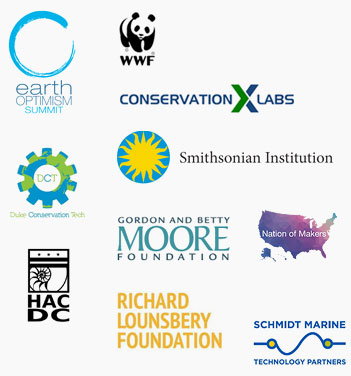Stop Plastic Waste from Entering the Ocean
The Problem
8 megatons of plastic waste is estimated to enter the ocean every year, and unless better waste management is achieved, it is predicted that by 2025 the ocean could contain one ton of plastic for every three tons of finfish.
All waste has impacts, but plastic waste is particularly challenging because of its unique properties, the same properties that make plastic a valuable material, which enables our everyday lives. Plastic is strong, light, and durable, and it can be tailored to meet the needs of many diverse uses. It keeps our food fresh, improves the gas mileage of our cars, and enhances the performance of our sportswear. However, plastic does not belong in the ocean. When leaked into the ocean, plastic waste damages ecosystems, threatens wildlife, and impacts the livelihoods of people who depend on the ocean’s natural capital. Furthermore, not only does this leaked plastic impact the planet, it also represents a missed opportunity to re-capture resources. If we can recover these materials, we can literally do more with less and ultimately, reduce the pressure on our natural systems to provide primary resources.
Recent research has estimated that 55-60% of plastic leakage comes from the top five contributing countries – China, Indonesia, the Philippines, Thailand, and Vietnam. All of these countries have a trend in common: in recent years, they have experienced rapid growth in GDP and benefited from reduced poverty and increased quality of life. Yet their waste management systems and infrastructure have not kept up with this growth. Although this trend is consistent, significant differences exist between geographies (population density, amounts and types of waste generated per square kilometer, waste collection rates, and local policies and incentives – for example) that influence the effectiveness of different approaches. For this reason, proposed solutions will be most effective if targeted to a specific location context. Densely populated cities, for example, have different challenges than rural communities or remote islands.
While formal waste management programs may not always exist, it’s important to consider the informal sector, specifically waste pickers, when considering solutions to this problem. Individuals who make their livelihoods from collecting high value recyclables out of waste and selling them are common in the top five countries, and they often face both serious health risks from their working conditions and may also be part of vulnerable populations. Their wellbeing and livelihoods must be considered a critical factor in any proposed solution.
To date, there have been many efforts to clean up the waste in our oceans, and clean-up efforts can indeed have benefits for targeted areas like beaches and high conservation value habitats. However, removing waste from the ocean only temporarily eases the problem, as the equivalent of 1 garbage truck of waste enters the ocean every minute. Prevention is ultimately needed to address the root cause of the problem.
The Challenge
The challenge is to stop the flow of plastic waste to the ocean in key, top-polluting locations (China, Indonesia, the Philippines, Thailand, and Vietnam). Several highly effective approaches for preventing plastic leakage have been identified:
- Closing leakage points within waste management systems
- Increasing collection of waste and expanding service
- Implementing waste to fuel and waste to energy options for difficult to recycle plastics
- Sorting out high value plastics for recycling, and converting low value plastics to refuse derived fuel (RDF)
Problem Statement
This challenge has three focus areas to stop the flow of plastic waste to the ocean in key, top-polluting locations (China, Indonesia, the Philippines, Thailand, and Vietnam). Consider tackling the problem with solutions that:
- Re-capture the value embedded in waste.
- Stop plastic pollution and other debris from entering the ocean.
- Innovatively manage and clean up the waste already in the ocean and reverse its negative effects, especially in sensitive ecosystems.
This Challenge was originally pitched by Alix Grabowski of the World WIldlife Fund as part of the Make for the Planet Competition in April 2017.
Respond to this Challenge!
While the Make for the Planet competition has ended, the conservation problems have not been solved! Your ideas and project proposals are needed to make a difference in conservation.
Share your project on the Digital Makerspace to shape and improve your idea. You’ll benefit from the technical expertise of the Tribe and connect to additional financial and technical resources. We’ll help you navigate the tech development process and identify market opportunities. Through collaboration, we build conservation solutions that are impactful and have the potential to scale.
PART OF
Make For The Planet (M4TP)PROJECTS
Plastic Removing Facility
The project consists of a barricade to stop plastic in the River this plastic will be removed using plastic dustbin or nets and this harvested waste will be subjected to crusher for recycling.
CHALLENGE LEADER
SPONSORS & ORGANIZERS
